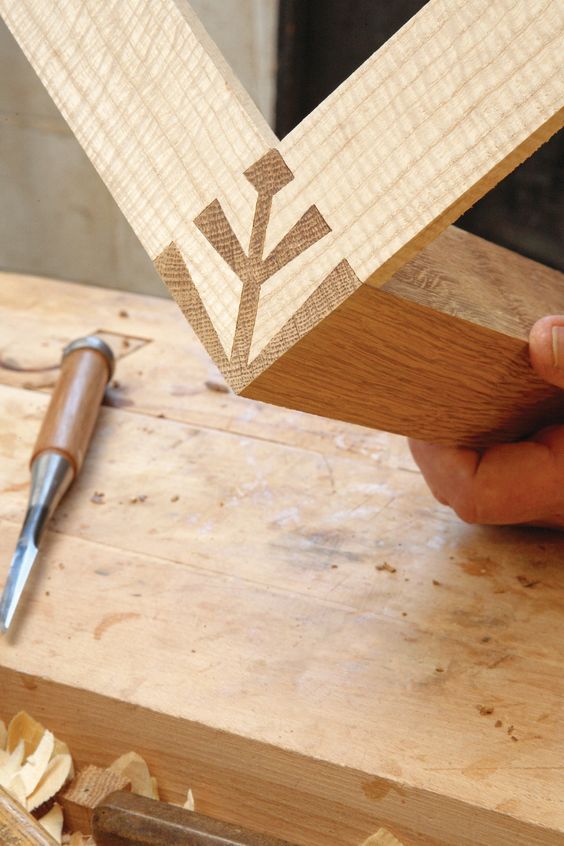Woodworking is a craft that has captivated people for centuries, and now more than ever, the popularity of small woodworking workshops is on the rise. These compact workspaces offer a unique charm and efficiency that can’t be replicated in larger studios. In this article, we will explore the advantages and benefits of having a small woodworking workshop, as well as provide tips for optimizing limited space to create an efficient workspace.
When it comes to woodworking, bigger doesn’t always mean better. Small woodworking workshops have become highly sought after among enthusiasts and professionals alike for their practicality and intimacy. With a smaller workspace, woodworkers can easily reach all their tools without wasting time searching through cluttered areas or walking long distances between different stations.
One of the key advantages of a small woodworking workshop lies in its ability to optimize limited space. Woodworkers are challenged to think creatively and develop clever layouts to make the most out of every inch available. In this article, we will explore various layout designs and floor plans suitable for compact workshops, as well as discuss the significance of utilizing vertical space and wall organizers.
Join us as we delve into the world of small woodworking workshops, discovering must-have tools, innovative project ideas, storage solutions, safety measures, success stories from experienced owners, and even real-life case studies of transformations from cramped spaces to dream workshops. Whether you’re just starting out or already have a small workshop of your own, this article will provide valuable insights on how to unlock the potential of your compact space for creative woodworking endeavors.
Must-Have Tools for a Small Woodworking Workshop
In order to make the most of a small woodworking workshop, it is crucial to have the right tools at your disposal. In this section, we will explore the must-have tools for a compact woodworking space and provide recommendations on space-saving tool storage solutions.
When selecting tools for a small woodworking workshop, it is important to prioritize versatility and compactness. Opting for multipurpose tools that can perform a variety of tasks can save precious space. Here are some essential tools that should be included in any small woodworking workshop:
- A high-quality table saw: This versatile tool can be used for various cuts and is a staple in any woodworking project.
- A compound miter saw: This tool allows for precise angled cuts and is essential for creating miters, bevels, and compound angles.
- A portable thickness planer: Perfect for smoothing rough lumber and ensuring consistent thickness throughout your projects.
- A compact router: This versatile tool can shape wood, create decorative edges, and cut dadoes or rabbets.
- A cordless drill/driver: Ideal for drilling holes and driving screws in tight spaces without the hassle of cords.
Once you have selected the necessary tools for your small woodworking workshop, efficient storage becomes key. Utilizing every inch of available space is crucial in keeping your workspace organized. Consider implementing these space-saving storage solutions:
- Vertical storage options: Install wall-mounted shelving units or pegboards to store frequently used hand tools within easy reach.
- Compact tool cabinets or drawers: Utilize underutilized spaces such as beneath workbenches or overhead storage areas with compact tool cabinets or drawers.
- Magnetic tool holders: Attach magnetic strips or racks on the walls to securely hold metal tools like chisels, screwdrivers, or wrenches.
By carefully selecting the right tools and implementing space-saving storage solutions, you can optimize your small woodworking workshop for efficiency and productivity. Remember to regularly declutter and organize your tools to maintain a clean and functional workspace. With these must-have tools and smart storage solutions, you’ll be well-equipped to tackle any woodworking project in your compact workshop.
Clever Workshop Layout Ideas for Small Spaces
Small woodworking workshops can be challenging to set up due to limited space. However, with clever layout ideas, it is possible to create a functional and efficient workspace. When designing the layout of a small woodworking workshop, it is important to maximize the use of vertical space and utilize wall organizers.
One layout design that works well in small spaces is the “U-shape” or “L-shape” configuration. This layout allows for easy movement between work zones and provides ample storage along the walls. By placing larger tools such as table saws and jointers against one wall, you can create a clear pathway in the center of the workshop.
Another option is to incorporate mobile workstations and tool carts into your workshop design. These portable workstations can easily be moved around when needed and can provide additional storage for tools and supplies. Utilizing tool carts also allows for quick access to frequently used items without taking up valuable floor or workbench space.
In addition to maximizing vertical space and utilizing mobile workstations, wall organizers are essential for optimizing small woodworking workshops. Installing pegboards on the walls provides flexible storage options for hand tools, clamps, and other accessories. Magnetic tool holders are another great option for keeping frequently used tools within reach while saving drawer or shelf space.
When planning your workshop layout, consider creating distinct work zones based on different woodworking tasks. For example, designate a dedicated area for assembly, another area for cutting or joining wood, and a separate space for finishing touches. By organizing your workshop into specific zones, you can streamline your workflow and make the most of your limited workspace.
Overall, clever layout ideas are crucial when designing a small woodworking workshop. Maximizing vertical space, incorporating mobile workstations and tool carts, utilizing wall organizers like pegboards or magnetic tool holders, and creating distinct work zones are all effective strategies for making the most out of limited space. With careful planning and organization, even small workshops can become highly functional and efficient spaces for woodworking projects.
Space-Optimizing Storage Solutions
In a small woodworking workshop, efficient storage solutions are essential to maximize the available space and keep tools and materials organized. Here are some practical storage ideas to help you optimize your compact workshop:
Versatile Shelving Units and Cabinets
Investing in shelving units and cabinets designed specifically for small spaces is a game-changer for any woodworking enthusiast. Look for modular systems that allow you to customize the layout according to your needs. Utilize both vertical and horizontal space by installing shelves above workbenches or cabinets under them.
Drawers with Dividers
Drawers are an excellent option for storing smaller hand tools, hardware, and accessories in a compact manner. To make the most of drawer space, use dividers or organizers to keep items separated and easily accessible. Consider using clear plastic drawer organizers so you can quickly locate specific items without wasting time rummaging through cluttered drawers.
Pegboard and Magnetic Tool Holders
Pegboard and magnetic tool holders are perfect for organizing frequently used hand tools such as chisels, screwdrivers, and pliers. Mount a pegboard on a wall within reach of your work area to hang tools vertically, freeing up valuable benchtop or drawer space. Magnetic strips or bars can be attached to walls or underneath shelves to store metal tools like wrenches or saw blades.
To make the most out of these storage solutions, it’s important to declutter regularly and only keep essential items within your workshop. This will not only free up more space but also improve efficiency by eliminating distractions caused by excess clutter.
By implementing these space-optimizing storage solutions in your small woodworking workshop, you’ll create a more organized environment that enhances productivity and allows you to focus on your craft without the frustration of searching for tools and materials.
Safety Measures in Small Woodworking Workshops
When setting up a small woodworking workshop, it is crucial to prioritize safety to ensure a comfortable and secure working environment. Although limited in space, small workshops require the same level of precaution as larger ones. In this section, we will discuss important safety measures and precautions that should be implemented in small woodworking workshops.
Proper Ventilation and Lighting
One of the first considerations for a safe small woodworking workshop is proper ventilation and lighting. Adequate ventilation helps maintain air quality by removing dust, fumes, and other potentially harmful particles produced during woodworking activities. Good ventilation can be achieved by using exhaust fans or opening windows if feasible.
In addition to ventilation, proper lighting is essential to prevent accidents and enhance visibility while working with sharp tools. Natural light is ideal, but if that’s not possible, make sure to install bright, even lighting throughout the workshop area. Task lights can also be added above workbenches or specific work zones for better illumination.
Protective Equipment and Safe Work Practices
Personal protective equipment (PPE) plays a vital role in ensuring the safety of woodworkers in any size workshop. Basic PPE includes safety glasses or goggles to protect the eyes from flying debris, ear protection such as earmuffs or earplugs to prevent hearing damage from loud machinery, and dust masks or respirators to guard against inhaling harmful particles.
Safe work practices are equally important in small woodworking workshops. This includes using push sticks or blocks when operating table saws or other cutting tools to keep hands at a safe distance from blades. It’s also crucial to maintain a clean workspace by promptly clearing away chips and offcuts that could pose tripping hazards.
Fire Safety
Fire safety should never be neglected when working with wood and power tools. Small woodworking workshops should have fire extinguishers readily accessible at multiple locations, ensuring they are within easy reach in case of emergencies. Regularly inspect and service fire extinguishers to ensure they are functional.
Another important aspect of fire safety is avoiding the accumulation of flammable materials in the workshop. Sawdust and wood shavings can quickly become potential fire hazards when not properly managed. Regularly clean up these debris and dispose of them safely according to local regulations.
Implementing these safety measures will help create a secure working environment in your small woodworking workshop, allowing you to enjoy your craft while minimizing risks. Remember that safety should always be a priority, regardless of the size of your workspace.
Innovative Small Woodworking Workshop Projects
In a small woodworking workshop, space is a precious commodity. However, limitations in size shouldn’t hinder your creativity or productivity. With the right projects and careful planning, you can make the most of your compact space and create beautiful woodworking pieces. This section will showcase inspiring and creative woodworking projects that are well-suited for small workshops, providing step-by-step instructions and tips for successful completion.
One project idea that is perfect for small woodworking workshops is creating a multi-functional workbench with built-in storage. This project allows you to maximize every inch of your workspace while also providing ample storage for your tools and materials. You can utilize the vertical space by incorporating shelves or drawers into the design of the workbench, allowing easy access to your essentials without cluttering the limited surface area.
Another innovative project that makes efficient use of limited space is building a wall-mounted tool organizer. With this project, you can hang your most frequently used tools on a pegboard or magnetic strip mounted on the wall, keeping them within arm’s reach while saving valuable workspace. This organizer can be customized based on your tool collection and needs, making it an efficient solution for small woodworking workshops.
For those who want to take their small woodworking workshop to new heights – literally – consider constructing a suspended lumber rack. By utilizing the overhead ceiling space, you can keep your lumber neatly organized and easily accessible without taking up any floor area. This project requires some careful planning and proper installation techniques to ensure safety, but it offers great benefits in terms of both functionality and aesthetic appeal.
By embarking on these innovative small woodworking projects, you can optimize every corner of your workshop while expanding your skills as a woodworker. Remember to consider the dimensions of your space and tailor each project accordingly. With some creativity and thoughtful planning, you’ll soon realize that size doesn’t matter when it comes to creating exceptional woodwork in your small workshop.
| Project | Description |
|---|---|
| Multi-functional Workbench with Built-in Storage | Create a versatile workbench that incorporates storage solutions, such as shelves or drawers, to maximize space and keep tools and materials organized. |
| Wall-mounted Tool Organizer | Build a pegboard or magnetic strip mounted on the wall to efficiently store frequently used tools within reach and free up workspace. |
| Suspended Lumber Rack | Utilize overhead space by constructing a rack to store lumber, keeping it neatly organized and easily accessible without occupying valuable floor area. |
Interviews with Small Woodworking Workshop Owners
As part of our exploration into the world of small woodworking workshops, we had the opportunity to speak with several experienced workshop owners. These individuals have successfully navigated the challenges of limited space and found innovative solutions to maximize their productivity. Through these interviews, we gained valuable insights and practical advice that can inspire and guide others looking to create their own small woodworking workshops.
One common theme that emerged from our conversations with these workshop owners was the importance of thoughtful planning and organization. Many emphasized the need to carefully consider the layout of the workspace in order to optimize efficiency.
For example, John Smith, a veteran woodworker with a small workshop in his garage, shared how he strategically arranged his tools and workbenches to create distinct functional zones within his limited space. By dedicating specific areas for cutting, assembly, and finishing, he was able to streamline his workflow and minimize wasted time moving between tasks.
Another key aspect highlighted by our interviewees was the value of versatile storage solutions. Amy Johnson, who transformed her spare bedroom into a small woodworking workshop, stressed the importance of having dedicated spaces for tool storage.
She utilized pegboards on her walls to hang frequently used tools and invested in multipurpose storage cabinets that could accommodate various sizes of equipment. This approach not only helped keep her workspace organized but also made it easier for her to access tools quickly during projects.
| Key Insights |
|---|
| Thoughtful planning and organization are crucial in optimizing a small woodworking workshop. |
| Versatile storage solutions help maximize space and keep tools easily accessible. |
The experiences shared by these small woodworking workshop owners demonstrate that even with limited space, it is possible to create a functional and productive workspace. By taking advantage of clever layout designs, utilizing vertical space efficiently, and implementing creative storage solutions, these individuals have successfully overcome the challenges associated with compact workshops. Their stories serve as inspiration for others looking to embark on their own woodworking journeys in small spaces.
In the following sections of this article, we will delve deeper into the specific techniques, strategies, and design ideas used by these workshop owners. Whether you have a tiny garage or a spare room at your disposal, we are confident that these insights will provide you with practical guidance and spark your creativity as you transform your small space into a dream woodworking workshop.
Case Studies
Introduction to Case Studies
In this section, we will explore real-life examples of individuals who have successfully transformed small spaces into fully functional woodworking workshops. These case studies serve as inspiration and provide practical insights into how one can optimize limited space for woodworking. By examining these transformations, readers can gain ideas and strategies to apply to their own small woodworking workshops.
Case Study 1: Maximizing Vertical Space
One inspiring example is the transformation of a cramped basement into a dream woodworking workshop by John Smith. Facing limited floor space, John focused on maximizing vertical space in his workshop. He installed sturdy wall shelving units from floor to ceiling for storing hand tools, power tools, and materials.
The shelves were custom-built to accommodate different sizes of toolboxes and containers. Additionally, he utilized pegboard panels mounted on the walls to hang frequently used hand tools, keeping them within easy reach and saving valuable drawer or cabinet storage space.
To create a functional work zone, John divided the area into designated stations using movable benches on casters. A dedicated assembly area was set up where he could efficiently work on projects without cluttering his main workspace. To optimize space even further, John installed an overhead retractable extension cord system that provided convenient power access wherever he needed it while keeping the cords off the floor.
Case Study 2: Transforming a Spare Room
Another noteworthy case study involves Sarah Martinez, who converted a spare room in her home into a small woodworking workshop. The key challenge for her was accommodating both her woodworking tools and maintaining the room’s functionality as a guest bedroom when needed. She cleverly designed her workshop using modular furniture that could be easily reconfigured or concealed.
Sarah opted for a foldable workbench attached to the wall that could be neatly folded up when not in use. This allowed her to utilize the same space as a desk or dresser when guests stayed over. To store her tools and materials, she incorporated a hidden storage system under the bed, utilizing pull-out drawers and vertical cabinets. This enabled her to keep her workshop tidy while also maintaining the room’s functionality.
Case Study 3: Utilizing Outdoor Space
Not all small woodworking workshops are confined indoors. Mark Thompson found a creative solution by transforming his backyard shed into an outdoor woodworking oasis. With limited interior space, Mark focused on optimizing the outdoor area surrounding his shed to maximize workspace.
He built an attached covered extension with movable walls that could be set up or taken down depending on the project size or weather conditions. By utilizing this outdoor workspace, Mark was able to comfortably work on larger projects or enjoy the benefits of natural light during the day.
These case studies showcase how individuals have successfully transformed small spaces into dream woodworking workshops. By following their innovative ideas and strategies, readers can unlock their own potential for creating functional and personalized workspaces within compact areas.
Conclusion
In conclusion, small woodworking workshops hold immense potential for creativity and productivity. Throughout this article, we have explored the advantages of having a smaller workspace and discussed various tools, layout ideas, storage solutions, safety measures, innovative projects, and inspirational interviews to help you make the most of your limited space.
By optimizing your small woodworking workshop, you can enjoy a range of benefits. Compact spaces promote efficiency by reducing the need for excessive movement and allowing for easy access to tools and materials. The selection of versatile and multipurpose tools enables you to save space without sacrificing functionality. Additionally, maximizing vertical space and utilizing wall organizers helps create a functional layout that allows for smooth workflow.
To further enhance your small woodworking workshop, it is essential to prioritize safety measures. Proper ventilation and lighting are crucial for a comfortable working environment while protective equipment ensures personal safety. By implementing these precautions in your compact space, you can focus on honing your woodworking skills without worry.
Finally, we have provided numerous inspiring examples of individuals who have successfully transformed small spaces into dream woodworking workshops. These case studies demonstrate that with careful planning and strategic design ideas, any small space can be turned into a productive and inviting workspace.
Now it’s time for you to unlock the potential of your small woodworking workshop. Embrace the challenges presented by limited space and let your creativity flourish. We encourage you to share your own small woodworking projects or tips with our community as we continue to empower each other in making the most out of our compact workspaces. Happy woodworking.
Frequently Asked Questions
How small can a woodworking shop be?
The size of a woodworking shop can vary depending on the space available and the tools and equipment needed for the specific projects. While it is possible to have a very small woodworking shop, it may limit the type and size of projects that can be undertaken.
A small woodworking shop can typically consist of a workbench, basic hand tools, and portable power tools like a table saw, router, or drill press. It may require efficient storage solutions to maximize the use of space, but with careful planning and organization, small woodworking shops can still be functional for hobbyists or those with limited space.
What is a good size for a wood workshop?
A good size for a wood workshop depends on several factors including individual preferences, types of projects to be undertaken, available space, and budget. Generally, a workshop ranging from 200 square feet to 500 square feet is considered a good size for most woodworking enthusiasts. This allows enough room for essential tools such as table saws and workbenches while providing ample space for maneuvering around larger projects.
Additionally, having extra space enables more efficient workflow and storage options for materials and supplies. Ultimately, the ideal size will vary based on personal needs and objectives.
Can you do woodworking in a garage?
Yes, it is definitely possible to do woodworking in a garage. Many woodworkers utilize their garages as the primary location for their workshops due to its convenience and availability of sufficient space. However, transforming a garage into an effective workspace requires thoughtful planning to optimize functionality within the available area.
This may involve incorporating mobile workstations or utilizing wall-mounted tool storage solutions to maximize floor space. Adequate ventilation should also be ensured in order to handle dust generated during woodworking processes. By implementing intelligent layout design and organization strategies specifically tailored to one’s garage setup, it is absolutely feasible to create a functional woodworking environment within this versatile space

Hi everyone! I’m a woodworker and blogger, and this is my woodworking blog. In my blog, I share tips and tricks for woodworkers of all skill levels, as well as project ideas that you can try yourself.





